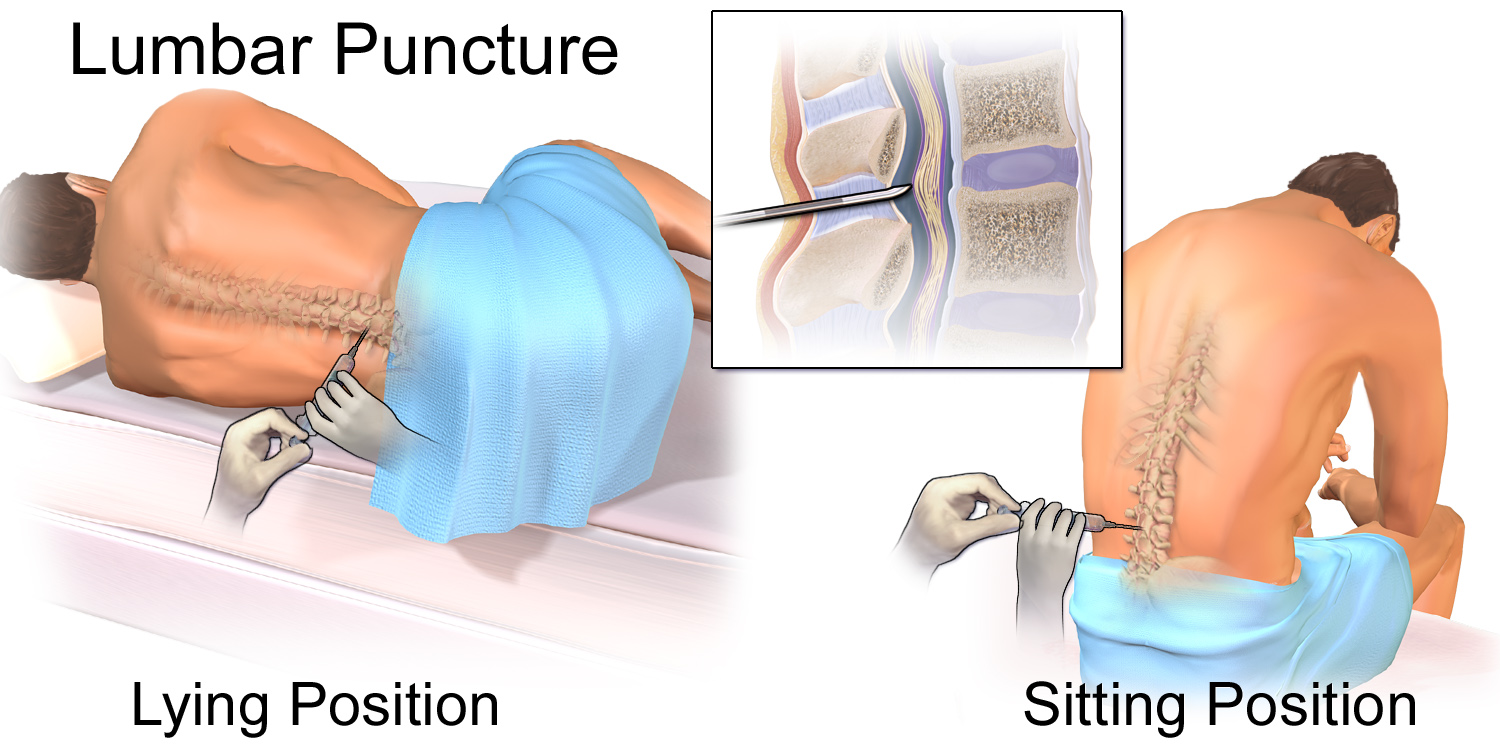aseptic meningitis on:
[Wikipedia]
[Google]
[Amazon]
Aseptic meningitis is the inflammation of the meninges, a membrane covering the

 The term ''aseptic'' can be misleading, implying a lack of
The term ''aseptic'' can be misleading, implying a lack of
brain
A brain is an organ that serves as the center of the nervous system in all vertebrate and most invertebrate animals. It is located in the head, usually close to the sensory organs for senses such as vision. It is the most complex organ in a ve ...
and spinal cord
The spinal cord is a long, thin, tubular structure made up of nervous tissue, which extends from the medulla oblongata in the brainstem to the lumbar region of the vertebral column (backbone). The backbone encloses the central canal of the sp ...
, in patients whose cerebral spinal fluid
Cerebrospinal fluid (CSF) is a clear, colorless body fluid found within the tissue that surrounds the brain and spinal cord of all vertebrates.
CSF is produced by specialised ependymal cells in the choroid plexus of the ventricles of the br ...
test result is negative with routine bacterial cultures. Aseptic meningitis is caused by viruses
A virus is a submicroscopic infectious agent that replicates only inside the living cells of an organism. Viruses infect all life forms, from animals and plants to microorganisms, including bacteria and archaea.
Since Dmitri Ivanovsky's ...
, mycobacteria, spirochetes
A spirochaete () or spirochete is a member of the phylum Spirochaetota (), (synonym Spirochaetes) which contains distinctive diderm (double-membrane) gram-negative bacteria, most of which have long, helically coiled (corkscrew-shaped or ...
, fungi
A fungus ( : fungi or funguses) is any member of the group of eukaryotic organisms that includes microorganisms such as yeasts and molds, as well as the more familiar mushrooms. These organisms are classified as a kingdom, separately from ...
, medications, and cancer
Cancer is a group of diseases involving abnormal cell growth with the potential to invade or spread to other parts of the body. These contrast with benign tumors, which do not spread. Possible signs and symptoms include a lump, abnormal b ...
malignancies. The testing for both meningitis and aseptic meningitis is mostly the same. A cerebrospinal fluid sample is taken by lumbar puncture and is tested for leukocyte levels to determine if there is an infection and goes on to further testing to see what the actual cause is. The symptoms are the same for both meningitis and aseptic meningitis but the severity of the symptoms and the treatment can depend on the certain cause.
The most common cause of aseptic meningitis is by viral infection. Other causes may include side-effects from drugs and connective tissue disorders.
Signs and symptoms
Aseptic meningitis is a disease that can depend on the patient's age, however, research has shown some distinct symptoms that indicate the possibility of aseptic meningitis. A variety of patients notice a change in body temperatures (higher than normal temperatures 38-40 °C), marked with the possibility of vomiting, headaches, firm neck pain, and evenlack of appetite
Anorexia is a medical term for a loss of appetite. While the term in non-scientific publications is often used interchangeably with anorexia nervosa, many possible causes exist for a loss of appetite, some of which may be harmless, while others i ...
. In younger patients, like babies, a meningeal inflammation can be noticed along with the possibility of hepatic necrosis and myocarditis. In serious cases, a multiple organ failure can also signal aseptic meningitis and oftentimes, in babies, seizures and focal neurological deficits can be early symptoms of aseptic meningitis. In fact, in newborns, the mortality rate is 70%. The next set of age group, like children, have similar but varying symptoms of sore throat, rashes, and diarrhea. In adults, symptoms and the harshness of them tend to be less in duration. Additionally, the probability of developing aseptic meningitis increases when patients have a case of mumps or herpes.
Symptoms of meningitis caused by an acute viral infection last between one and two weeks. When aseptic meningitis is caused by cytomegalovirus 20 percent of individuals face mortality or morbidity. If left untreated it can affect an individual's hearing and learning abilities.
Causes
The most common cause of aseptic meningitis is a viral infection, specifically byenteroviruses
''Enterovirus'' is a genus of positive-sense single-stranded RNA viruses associated with several human and mammalian diseases. Enteroviruses are named by their transmission-route through the intestine ('enteric' meaning intestinal).
Serologic ...
. In fact, 90 percent of all meningitis cases that are viral are caused by enteroviruses. Other viruses that may cause aseptic meningitis are varicella zoster virus
Varicella-zoster virus (VZV), also known as human herpesvirus 3 (HHV-3, HHV3) or ''Human alphaherpesvirus 3'' (taxonomically), is one of nine known herpes viruses that can infect humans. It causes chickenpox (varicella) commonly affecting chil ...
, herpes
Herpes simplex is a viral infection caused by the herpes simplex virus. Infections are categorized based on the part of the body infected.
Oral herpes involves the face or mouth. It may result in small blisters in groups often called cold ...
, and mumps. Other causes may include mycobacteria, fungi, spirochetes, and complications from HIV. Side effects of certain drugs such as nonsteroidal anti-inflammatory drugs
Non-steroidal anti-inflammatory drugs (NSAID) are members of a therapeutic drug class which reduces pain, decreases inflammation, decreases fever, and prevents blood clots. Side effects depend on the specific drug, its dose and duration of ...
(NSAIDs), antibiotics
An antibiotic is a type of antimicrobial substance active against bacteria. It is the most important type of antibacterial agent for fighting bacterial infections, and antibiotic medications are widely used in the treatment and prevention o ...
(e.g., trimethoprim-sulfamethoxazole
Trimethoprim/sulfamethoxazole, sold under the brand name Bactrim among others, is a fixed-dose combination antibiotic medication used to treat a variety of bacterial infections. It consists of one part trimethoprim to five parts sulfamethoxaz ...
or amoxicillin
Amoxicillin is an antibiotic medication used to treat a number of bacterial infections. These include middle ear infection, strep throat, pneumonia, skin infections, and urinary tract infections among others. It is taken by mouth, or less c ...
), and antiepileptic drugs
Anticonvulsants (also known as antiepileptic drugs or recently as antiseizure drugs) are a diverse group of pharmacological agents used in the treatment of epileptic seizures. Anticonvulsants are also increasingly being used in the treatment of b ...
can also cause aseptic meningitis.
There are multiple types of aseptic meningitis that are differentiated based on their cause.
* 
Viral meningitis
Viral meningitis, also known as aseptic meningitis, is a type of meningitis due to a viral infection. It results in inflammation of the meninges (the membranes covering the brain and spinal cord). Symptoms commonly include headache, fever, sen ...
** Enterovirus (EV) caused meningitis. This is the most common cause of viral meningitis, with 90% of viral meningitis cases being caused by EVs.
** Human immunodeficiency virus
The human immunodeficiency viruses (HIV) are two species of ''Lentivirus'' (a subgroup of retrovirus) that infect humans. Over time, they cause acquired immunodeficiency syndrome (AIDS), a condition in which progressive failure of the immun ...
(HIV)
** Mumps meningoencephalitis
** Mosquito carried viruses of the flavivirus family. Saint Louis encephalitis
Saint Louis encephalitis is a disease caused by the mosquito-borne Saint Louis encephalitis virus. Saint Louis encephalitis virus is related to Japanese encephalitis virus and is a member of the family ''Flaviviridae''. This disease mainly affe ...
(SLE) and West Nile virus
West Nile virus (WNV) is a single-stranded RNA virus that causes West Nile fever. It is a member of the family '' Flaviviridae'', from the genus '' Flavivirus'', which also contains the Zika virus, dengue virus, and yellow fever virus. The v ...
(WNV) are the most typical.
** Specific types of Herpes can result in aseptic meningitis. These are (HSV)-1, (HSV)-2, varicella-zoster virus, and (HHV6).
* Bacteria
** Lyme disease
Lyme disease, also known as Lyme borreliosis, is a vector-borne disease caused by the ''Borrelia'' bacterium, which is spread by ticks in the genus ''Ixodes''. The most common sign of infection is an expanding red rash, known as erythema migran ...
** Syphilis
** Leptospirosis
* Fungi
** Cryptococcal infection
** Coccidioidal infection
* Drug-induced aseptic meningitis (DIAM)
** Irritation of the meninges from drugs administered directly to the spinal canal or subarachnoid space. The hypersensitivity to the drug results in an immune response.
* Autoimmune diseases
** Systemic lupus erythematosus.
* Cancer-caused aseptic meningitis such as neoplastic meningitis
** This affects about 5% of all cancer cases, with a predominance in leukemias.
* Neurosarcoidosis
Neurosarcoidosis (sometimes shortened to neurosarcoid) refers to a type of sarcoidosis, a condition of unknown cause featuring granulomas in various tissues, in this type involving the central nervous system (brain and spinal cord). Neurosarcoidosi ...
Diagnosis
 The term ''aseptic'' can be misleading, implying a lack of
The term ''aseptic'' can be misleading, implying a lack of infection
An infection is the invasion of tissues by pathogens, their multiplication, and the reaction of host tissues to the infectious agent and the toxins they produce. An infectious disease, also known as a transmissible disease or communicable dis ...
. On the contrary, many cases of aseptic meningitis represent infection with viruses or mycobacteria that cannot be detected with routine methods. Medical professionals will take into consideration the season of the year, the medical history of the individual and family, physical examination, and laboratory results when diagnosing aseptic meningitis.
One common medical test used when diagnosing aseptic meningitis is lumbar puncture. A medical professional inserts a needle between two vertebrae to remove cerebrospinal fluid (CSF) from the spinal cord. The cerebrospinal fluid collected from the lumbar puncture is analyzed by microscope examination or by culture to distinguish between bacterial and aseptic meningitis. Samples of CSF undergo cell count, Gram stains, and viral cultures, and polymerase chain reaction
The polymerase chain reaction (PCR) is a method widely used to rapidly make millions to billions of copies (complete or partial) of a specific DNA sample, allowing scientists to take a very small sample of DNA and amplify it (or a part of it) ...
(PCR). Polymerase chain reaction has increased the ability of clinicians to detect viruses such as enterovirus
''Enterovirus'' is a genus of positive-sense single-stranded RNA viruses associated with several human and mammalian diseases. Enteroviruses are named by their transmission-route through the intestine ('enteric' meaning intestinal).
Serologic ...
, cytomegalovirus, and herpes virus in the CSF, but many viruses can still escape detection. Other laboratory tests include blood, urine, and stool collection. Medical professionals also have the option of performing a computed tomographic (CT) scan or magnetic resonance imaging (MRI), these tests help observe calcifications or abscesses.
Treatment
If CSF levels are irregular among individuals, they will undergo hospitalization where they receive antiviral therapy. If aseptic meningitis was caused byherpes
Herpes simplex is a viral infection caused by the herpes simplex virus. Infections are categorized based on the part of the body infected.
Oral herpes involves the face or mouth. It may result in small blisters in groups often called cold ...
simplex virus (HSV), the individual will receive acyclovir, an antiviral drug. If infants are diagnosed, medical professionals will order regular check-ins for hearing and learning disabilities.
History
Aseptic meningitis was first described by Wallgren in 1925. Aseptic meningitis cases have varied historically. Aseptic meningitis caused by mumps has declined in the United States due to the increased use of vaccination which prevents mumps cases from occurring.See also
* Central nervous system infections * MeningitisReferences
External links
{{Diseases of meninges Meningitis Enterovirus-associated diseases